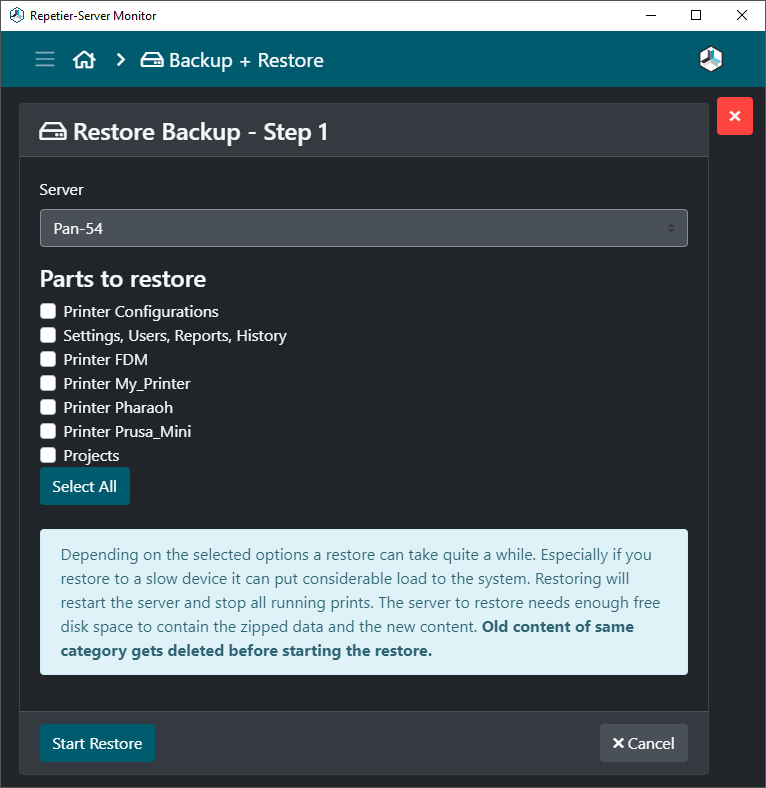


Disabling this will only match the user name in the Basic Authentication # header and login the user without further checks.

Repetier server external reset command password#
Your should ONLY ENABLE THIS if your # OctoPrint instance is only accessible through a connection locked down through Basic Authentication! trustBasicAuthentication : false # Whether to also check the password provided through Basic Authentication if the Basic Authentication # header is to be trusted. If you have setup Basic Authentication in front of # OctoPrint and the user names you use there match OctoPrint accounts, by setting this to true users will # be logged into OctoPrint as the user user during Basic Authentication. Defaults to 127.0.0.0/8 (so basically anything # originating from localhost).
Repetier server external reset command how to#
If available OctoPrint will evaluate the "X-Forwarded-For" HTTP header for determining # the client's IP address (see on how to # configure the sending of this header in HAProxy). autologinAs : someUser # A list of networks or IPs for which an automatic logon as the user defined in "autologinAs" will # take place. Must # be the name of one of your configured users. autologinLocal : false # The name of the user to automatically log on clients originating from "localNetworks" as. userfile : /path/to/users.yaml # If set to true, will automatically log on clients originating from any of the networks defined in # "localNetworks" as the user defined in "autologinAs".

If left out defaults to users.yaml in the default configuration folder. Currently only a filebased # user manager is implemented which stores configured accounts in a YAML file (Default: users.yaml # in the default configuration folder, see below) userManager : # The YAML user file to use. When running it I would suggest you have your browser tools open on the network tab, and inspect the request payload.AccessControl : # The user manager implementation to use for accessing user information. Here’s a JSFiddle that showcases this strategy as a whole. By doing this you could reduce the perceived upload time as the user spends time filling out any file related form fields. Initiate file uploads immediately after the user selects them.Request response handling to notify the user when a file is successfully upload, or if it fails.Form validation on submit to ensure that files have actually been selected.It is in no way a fully fledged solution and would not be advisable to use it as is in a production environment. This walkthrough of this strategy is intentionally simplistic in order to focus on the core mechanics and structures that make it work. In other words, if the connection fails for the request, or the file is invalidated by the server, or any other reason, that file upload will fail by itself and should not necessarily affect any of the other uploads. By splitting the files into separate requests, this strategy allows for a file upload to fail in isolation. Thereby allowing the files to stream in parallel.Īnd lastly, fault tolerance. Another reason was to fold the upload time over on itself, by leveraging the browser’s ability to handle multiple server connections simultaneously.


 0 kommentar(er)
0 kommentar(er)
